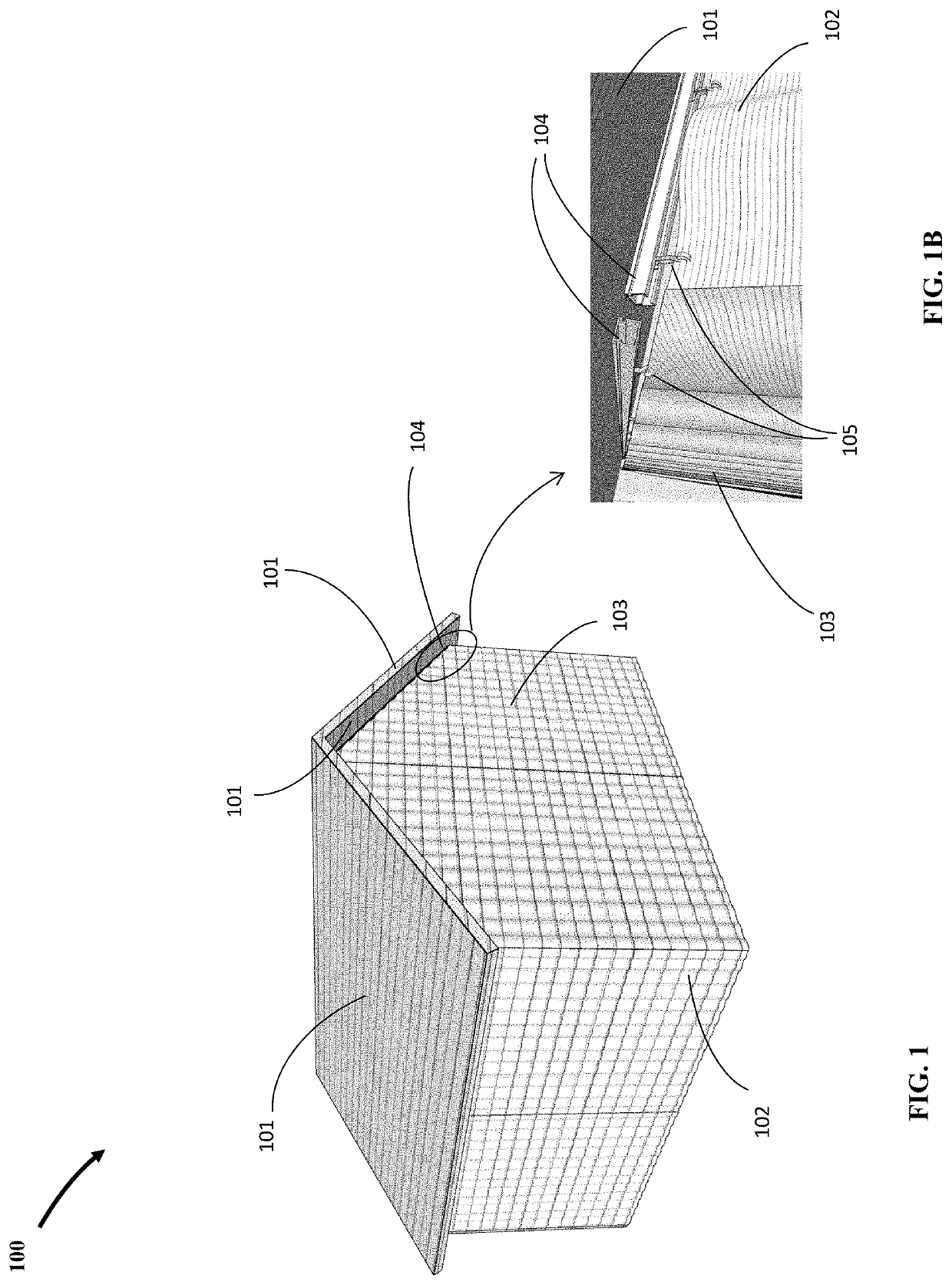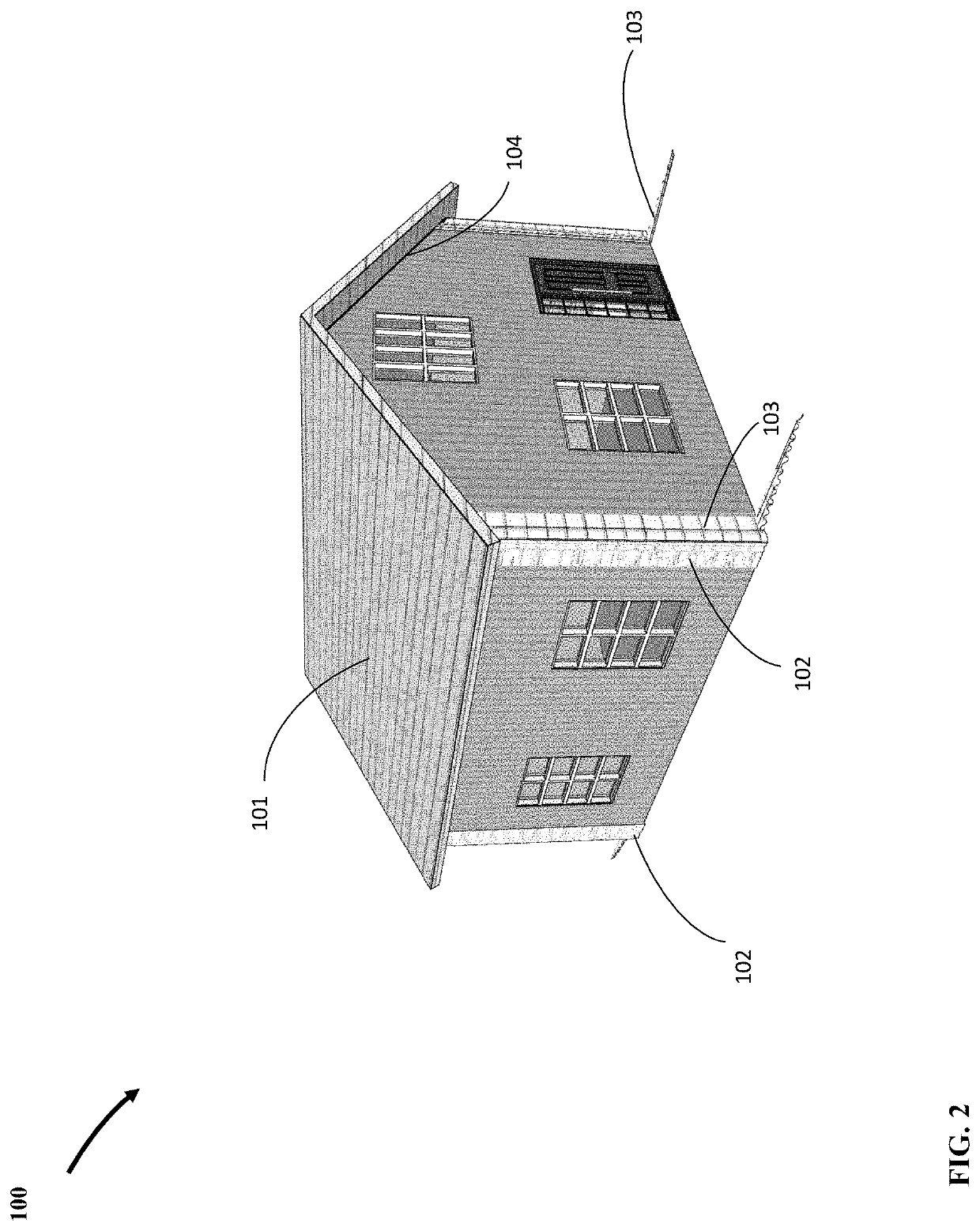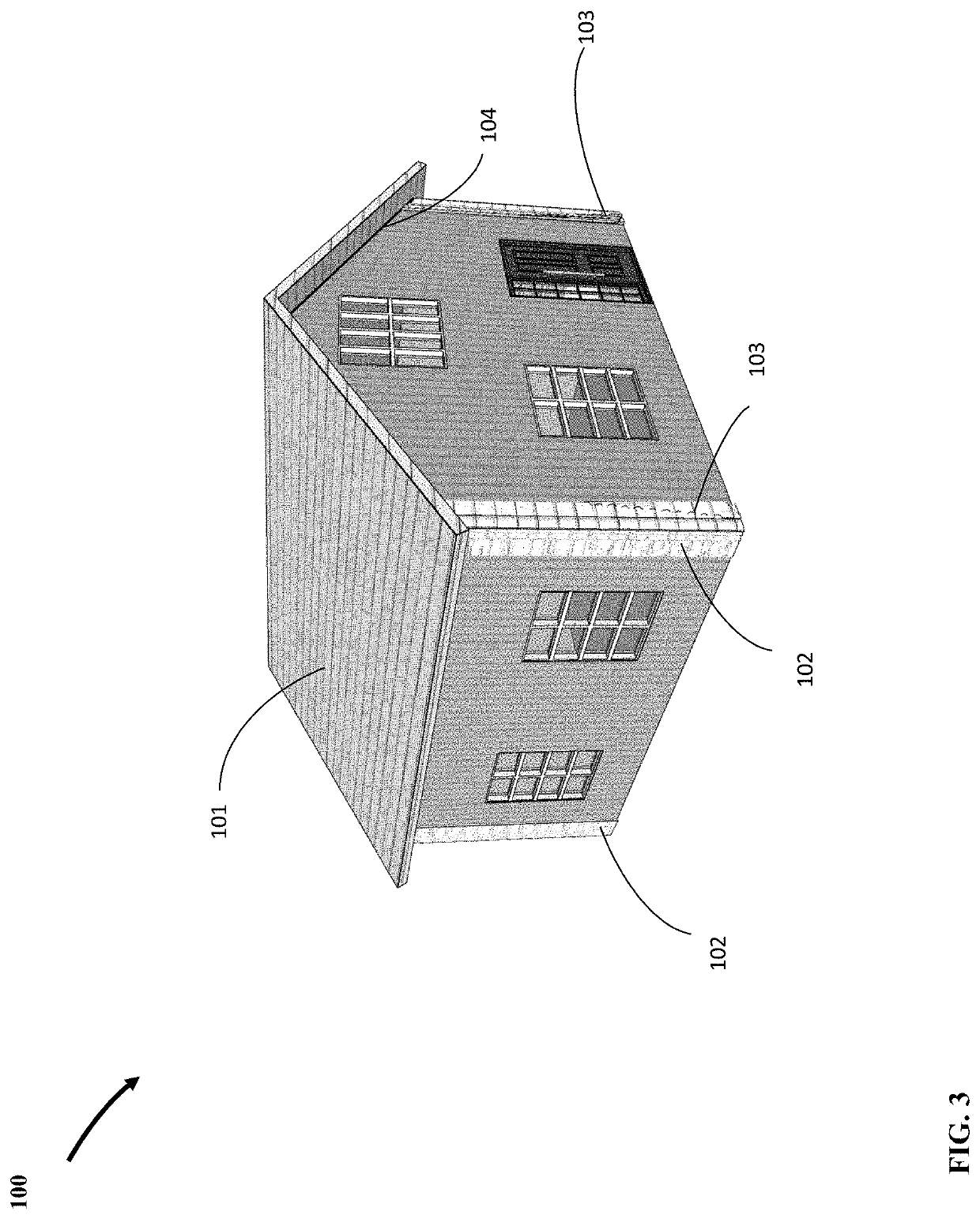Fire guard
a fire guard and cover technology, applied in the field of fire guards, can solve the problems of impracticality of guardrails disclosed in prior art, and the inability of guardrails to function on gable end walls, and achieve the effect of simple and effectiv
- Summary
- Abstract
- Description
- Claims
- Application Information
AI Technical Summary
Benefits of technology
Problems solved by technology
Method used
Image
Examples
Embodiment Construction
[0027]Referring to FIG. 1 and FIG. 1B, there is shown a perspective view of a typical structure fitted with apparatus (100) of present invention for wildfire protection by thermal insulation fully deployed. All external surfaces of the roof, including the fascia, soffit, hip, ridge, rake, plus any dormer, valley, and chimneys on all sides are fully and permanently covered over with aluminized structure wrap (101) with the aluminized surface on top. Aluminum foil is a durable material that has historically been used to cover over asphalt and bitumen roof tops to protect against drying and development of cracks. The present invention (100) extends the utility of aluminum foil covering for roofs to fire protection by thermal insulation by using it in the form of aluminized structure wrap (101) that covers not only the roof surface but also all other external surfaces of the roof The reflective surface is not restricted to aluminum foil and may be any other durable and suitable reflecti...
PUM
 Login to View More
Login to View More Abstract
Description
Claims
Application Information
 Login to View More
Login to View More - R&D
- Intellectual Property
- Life Sciences
- Materials
- Tech Scout
- Unparalleled Data Quality
- Higher Quality Content
- 60% Fewer Hallucinations
Browse by: Latest US Patents, China's latest patents, Technical Efficacy Thesaurus, Application Domain, Technology Topic, Popular Technical Reports.
© 2025 PatSnap. All rights reserved.Legal|Privacy policy|Modern Slavery Act Transparency Statement|Sitemap|About US| Contact US: help@patsnap.com



